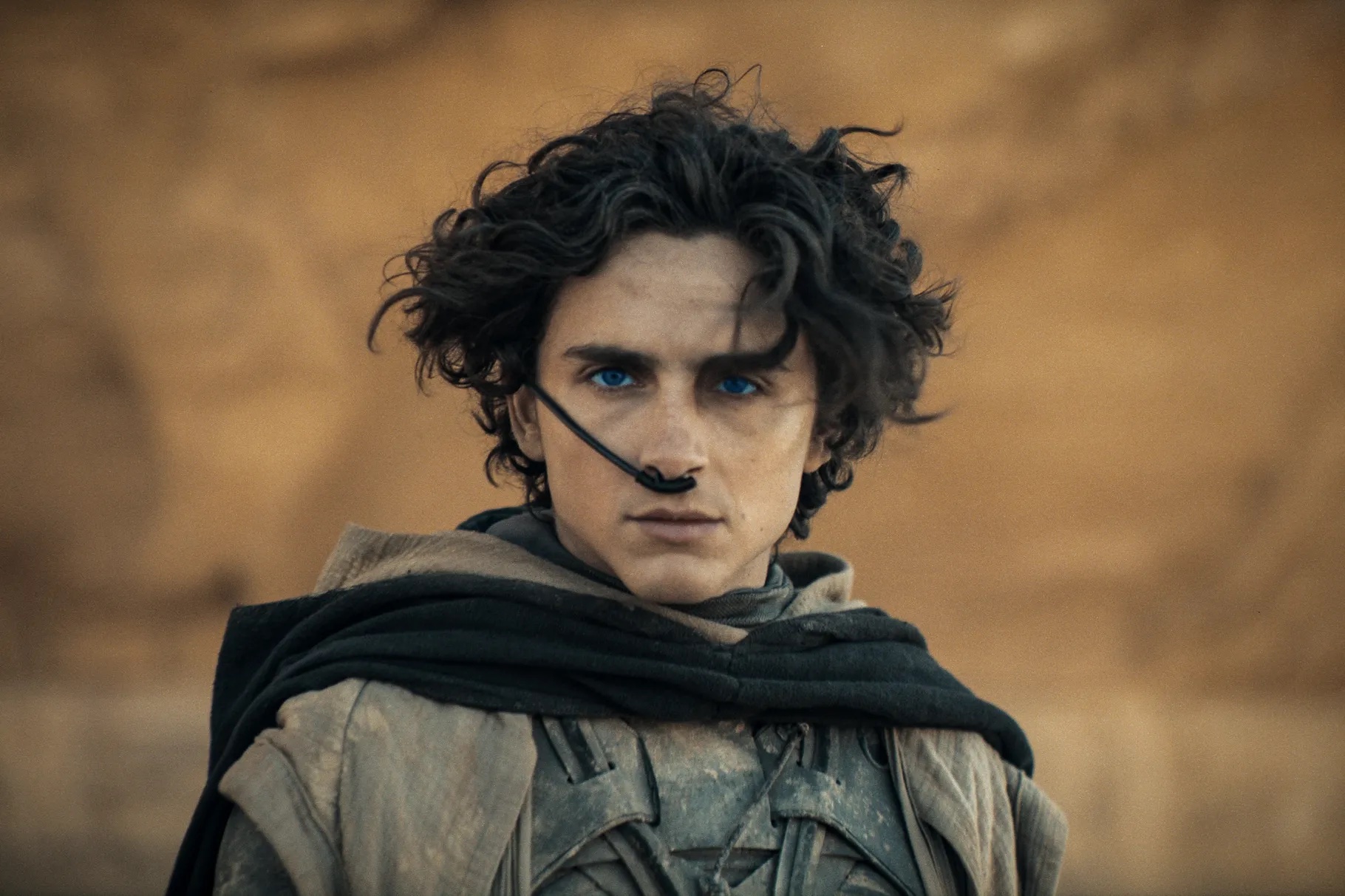Timothee Chalamet as Paul Atredies. Photo courtesy of Vox.
EMMA MCLEAN | STAFF REPORTER | emclean@butler.edu
“Film Fanatics” focuses on the latest and greatest cinema has to offer. Ranging from the newest movies in theaters to familiar favorites, enjoy thoughtful reviews that inspire further reflection or several rewatches. Read on to discover a new favorite film.
The second installment of “Dune” has arrived with cosmic force, making an even larger impact than its already colossal predecessor. Denis Villeneuve’s 2021 adaptation of Frank Herbert’s dystopian novel was largely a success with both critics and fans. In “Dune: Part Two”, Villeneuve seizes on the pre-existing momentum and surpasses expectations through unbridled adrenaline, quiet emotion and many sandworms.
The sequel begins right where the last film left off, rapidly diving into a world of sand and suffering with Paul Atredies — portrayed by Timothee Chalamet. Paul and his mother are hiding in the desert with the Fremen warriors, most notably Chani, portrayed by Zendaya. Paul and Chani’s relationship exudes a warmth and softness that is both believable and vital to the film. The harsh and despairing nature of the “Dune” universe necessitates an emotional anchor for audiences to hold onto, which Zendaya and Chalamet provide with ease. As Paul struggles to accept his power and newfound religious status, his relationship with Chani suffers as well. When the couple is not sitting on dunes or observing the sunset, they are fighting a bloody battle for freedom.
As Paul and the Fremen travel further into the perilous North, it is clear that the stakes in the second film are exponentially higher than in the first. That shift is also reflected by the sheer power and fortitude pumped into the veins of “Dune: Part Two”, including the gladiator-style battle with a booming stadium surrounding the beastly Feyd-Rautha — portrayed by Austin Butler. Feyd-Rautha has no moral integrity, only a desire to be praised and a raspy voice that, fortunately, is nothing like Butler’s Elvis accent. Butler excels at embodying this character and holds his own among the already star-studded cast. In the film’s final moments, Feyd-Rautha and Paul face off in a captivating scene that, unlike the majority of the film, is accompanied by no music, only the sound of their swords clashing.
The ending of “Dune: Part Two” seamlessly reveals the plans for the next and final installment of the trilogy — titled “Dune: Messiah”. This will feature Paul’s new power and presumably more of Princess Irulan — portrayed by Florence Pugh. Audiences should not expect too many answers from the film’s ending, and it appears that they will have to wait about three years to see the continuation of Villeneuve’s series. The “Dune” franchise is certainly suited for those who are willing to invest in this sometimes slow world. Nonetheless, Villeneuve proved that the wait for the second part was worth it.
In addition to being a success among critics, “Dune: Part Two” has also liberated the box office from its dry spell. The movie grossed $81.5 million dollars in its opening weekend alone. For reference, David Ayer’s Jan. 12 release, “The Beekeeper“, is presently the highest-grossing film of 2024 and made $16.6 million dollars in its opening weekend. At its current rate, “Dune: Part Two” has the potential to be one of the year’s highest-grossing films.
The flawless casting, extraordinary visuals and futuristic vibrancy solidify “Dune: Part Two” as one of the decade’s best sci-fi films. Chalamet’s Paul Atredies is an incredibly constructed hero who — when not creepily speaking to his mother’s unborn child — is quite the renegade. The film is two hours and 45 minutes of pure force, challenging audiences to keep up and then rewarding them when they do. Villeneuve accomplishes seemingly unattainable feats, but in this second installment, he repeatedly proves that he is not afraid of the bizarre.
“Dune: Part Two” is now in theaters and will eventually be available to stream on Max — but really, see it in theaters.


